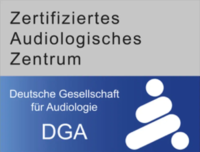About the disease
Sensorineural hearing loss is caused by damage to the middle ear, specifically the hair cells (nerve endings) in the cochlea, when exposed to loud or continuous noise. The cochlea transmits sounds to the brain along the auditory nerve. It is connected to the Eustachian tube and ear drum, which are in turn connected to the ear canal, which ends at the opening of the outer ear.
There are many causes of sensorineural hearing loss. The most common cause of partial, mild hearing loss is age. According to HearingLink.org, one in seven people over the age of 65 experiences some kind of hearing deterioration. Having a genetic predisposition or previous trauma to the ear or head (including a tumor) can also cause sensorineural hearing loss. Various infections of the middle ear are also known to cause sensorineural hearing loss (although this is often temporary and hearing is restored once the infection is treated.)
Symptoms
- Hearing loss
- Loss of hearing acuity
- Pain in the ear
- Fluid discharged from the ear
- Hearing loss in one of the ears
- Redness in the ear
- Previous history of infections of the middle ear
Diagnosis
- During a general examination, the otolaryngologist will look for signs of inflammation or infection inside the ear, such as otitis or meningitis, which are the most common causes of hearing deterioration.
- The patient will be asked to stand up, close one ear and repeat what the doctor says, standing at various distances and speaking at various volumes.
- An audiogram is a common diagnostic method for measuring hearing. The patient listens to sound waves of different strength through a set of headphones. The earlier the patient hears the sound, the better their hearing is.
Treatment
- Tympanotomy is a surgical procedure whereby the surgeon repairs the cochlea and restores the patient’s hearing, gaining access via a small incision.
- Unilateral cochlear implantation is a surgical procedure whereby a new cochlea is implanted into the ear, thus restoring the hearing function. This is an option recommended for people experiencing profound hearing loss.
Authors:
This article was edited by medical experts, board-certified doctors Dr. Nadezhda Ivanisova, and Dr. Bohdan Mykhalniuk. For the treatment of the conditions referred to in the article, you must consult a doctor; the information in the article is not intended for self-medication!
Our editorial policy, which details our commitment to accuracy and transparency, is available here. Click this link to review our policies.




















